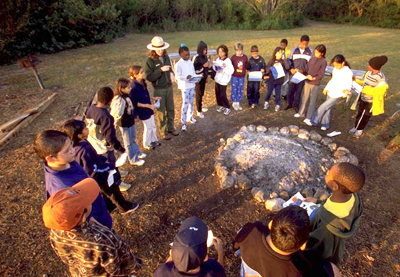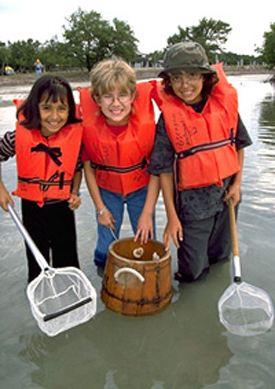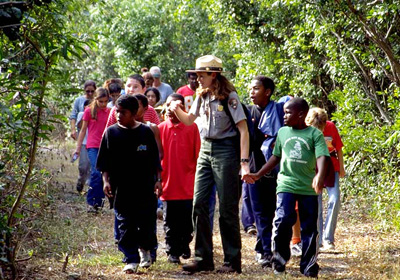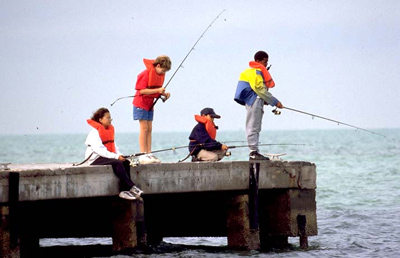
Simple precautions are key for child safety
HOMESTEAD, Fla.— Biscayne National Park officials say simple precautions, like good parenting and being aware of your surroundings can eliminate potential hazards for those bringing kids to the park.
More than 1,000 kids visit Biscayne National Park annually on school field trips, not to mention the numbers that flock to the park with their families. With those kinds of numbers, park rangers and officials ask parents, teachers and chaperones to take the necessary precautions before bringing little ones to the park.
 |
A park ranger talks to kids visiting park (Photo courtesy of National Park Service). |
“The main responsibility is on the visitor to be aware of their surrounding and make good decisions,” said Maria Beotegui, education coordinator for the park.
“One of the biggest hazards that people don’t seem to consider is the weather,” said Beotegui.
Beotegui, who’s worked at the park for six years, says that things as simple as dressing according to the weather and bringing bug repellant can prevent potential mishaps.
Gary Bremen, who’s been a ranger at the park for 15 years, says that far-fetched concerns like animal attacks should be at the bottom of a parent’s list of concerns. He encourages adults to be mindful of where their little ones are at all times to reduce potential accidents.
“Use your common sense,” Bremen said. “Good parenting is the best thing to bring”.
Bremen is also program coordinator for Family Fun Fest, three hours of activities for families with children on the second Sunday of each month from January through May.
Other programs for children at the park include a Junior Ranger program, overnight camping trips and ranger tours among a slew of other activities designed for children to enjoy the park.
 |
Students explore the underwater world of the seagrass community off of Elliott Key (Photo by Neil Montanus). |
Chaperones are also required and the park officials ask for there to be at least one chaperone per five children. In addition, some activities require kids to wear long pants, socks and closed-toed shoes.
“We take the precautions to eliminate the hazards,” said Beotegui.
But park officials agree that the ultimate responsibility to ensure child safety in the park rest on the adults who bring the children out.
Rangers and officials are present for emergencies but their main purpose is to be educational resources for visitors.
Nevertheless, for some recreational activities, the park has life jackets, scuba gear and other safety equipment available for rentals.
“We still feel that nature here at the park is not a spectator sport, we want kids to touch and feel things,” said Beotegui.
| A Biscayne ranger leading students on Hammock Hike, one of the ranger-led activities offered by the park (Photo courtesy of National Park Service) |
 |
In that respect, park officials ask adults and children to be respectful of the park and its plant and animal life and use common sense. While it may be fine to touch some things, the park preservation should always be kept in mind.
“We prepare just in case,” said Beotegui. “But then we go for it.”
For more information on how to plan a trip to the park with kids visit the park’s website at http://www.nps.gov/bisc//forkids/ or call 305-230-7275.
If You Go
Activities for Kids at Biscayne National Park include:
- Snorkeling in the bay or on the coral reef
- Canoeing along the park’s mangrove coast
- Exhibits at The Dante Fascell Visitor Center to help kids learn about Biscayne’s watery world
- A three-day / two-night residential environmental education camping program on Elliott Key for fifth and sixth grade classes (from January through March only )
- Family Fun Fest, three full hours of hands on activities for kids and kids-at-heart hosted by the park (on the second Sunday of each month from January through May)
- Junior Ranger Program
 |
Kids fishing at Biscayne National Park (Photo courtesy of National Park Service). |

Comments are Closed